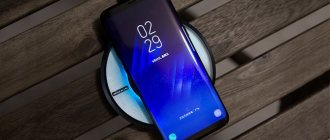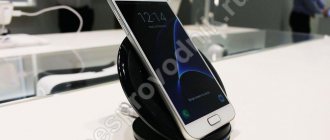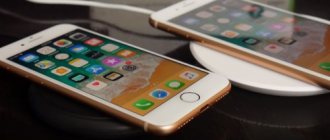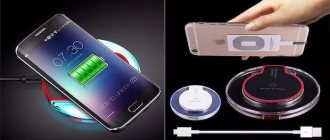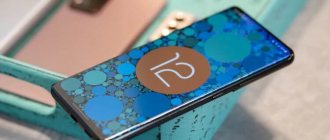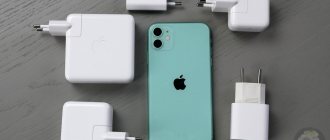Wireless battery charging technology originated in the smartphone industry but is now used in many other areas. Initially, it was aimed at small electronic devices, including smartphones, tablets, smart watches, and so on. Nowadays, wireless battery charging technology can be found in devices as far apart as toothbrushes and electric cars. For example, Formula E uses Qualcomm wireless floor chargers. In this material we will look at how the technology works, the history of its appearance and some devices where it is implemented.
What is the technology based on and its varieties?
We can say that the prototype of wireless charging appeared at the end of the 19th century, when Nikola Tesla demonstrated the transfer of electrical energy through the air by creating a magnetic field between two coils. However, the technology found wide practical application only a century later.
Some experts distinguish three types of wireless chargers.
- Using tightly coupled electromagnetic inductive charging without radiation.
- Through-type devices using loosely coupled electromagnetic resonant charging with radiation of a few centimeters.
- Unbundled RF wireless charging that provides charging within meters.
Tightly coupled and loosely coupled types of charging are based on the same physical principle - a magnetic field induces a current in a closed conductor.
To operate the coils at the same frequency, appropriate capacitance can be added. This increases the induced current, improves efficiency and allows energy to be transferred over a greater distance. Increasing the size of the coils and their number also increases the distance over which energy is transferred.
Car charging systems are now being produced that provide electricity transmission over a distance of up to 25 cm. They use large copper coils with a diameter of more than 25 cm at the receiver.
For example, such systems are produced by WiTricity. Capacitors are added to the conducting loop to increase the energy captured. The efficiency of such chargers is at least 92%, and they transmit power levels of up to 11 kW.
Principle of operation
The basis for the creation of devices was electromagnetic induction, so charges of this type are often called “inductive” or “magnetic”. The principle of its operation lies in the ability of electromagnetic radiation to transmit current over a short distance without wires. This requires two coils, one of which will be a conductor, and the second will act as a receiver. If you place them close to each other and apply an alternating current to the first, an alternating current will also be generated at the second, the receiver. It can be used as a source of energy for a telephone after transformation into a constant voltage of the required value.
For active users: TOP 10 smartphones with a powerful battery
The operation of wireless charging for the iPhone 8 and 8 Plus, as well as analogues, depends on the distance between the conductor and the receiver. As you move away, the magnetic field is wasted and the technology doesn't work as expected.
For high-quality contact, not only the air space between the elements is suitable. Plastic, glass, and wood do not interfere with the magnetic field. Only metal will not let it through. At the same time, different models of devices have certain parameters for the permissible distance and rate of charge arrival.
How it works
Design
Wireless charging is realized thanks to a magnetic field covering the transmitting and receiving coils. In this case, there is no direct electrical contact, which eliminates wear and tear after repeated charging cycles. There are several standards for wireless battery charging, which will be discussed below.
The wireless charging design itself is usually a flat platform in which the transmitting coil is placed. Such models are very compact and fit well into any design. The charging base is connected to a power source. And the second coil is located inside the equipment that receives the charge. If we are talking about a phone, then it can be built-in or purchased separately. In the latter case, it will occupy the port. An important issue is the shielding of the coils so that the energy transfer process does not cause malfunctions in the electronic equipment. Basic elements of a wireless battery charging system
- Wireless transmitter. In most cases, it receives power from an AC/DC adapter or USB port. The transmitter has a coil of copper wire that generates an electromagnetic field. There are models that have several coils, which are controlled by separate transistor bridges. This ensures that more power is transmitted to the receiver.
- Switched transistor bridge using 2-4 field-effect transistors. To set the resonant frequency, a capacitor is installed inside the system.
- Wireless receiver. It contains a rectification circuit based on field-effect transistors. It also provides filtering of incoming energy using output capacitors. From the receiver, power is supplied to the battery through a switching regulator or linear cascade. The receiver can send a command to the transmitter to change the charging current or voltage. In addition, it can send a shutdown signal when the end of the charge is detected.
- Battery. It is located inside the mobile device and is charged from the receiver.
The choice of coil for wireless charging is determined by the standard used. If the coil is placed freely inside the transmitter, then inside the receiver there are only a few millimeters to accommodate it, as well as the associated electronics. In addition, some shielding is provided to prevent electromagnetic interference within the device.
The second important point is that manufacturers of the transmitter and receiver must provide plastic walls through which energy will be transferred. Moreover, for normal energy transfer, the thickness of these walls should not exceed 2 mm. Plus, a circuit for detecting foreign objects and turning off charging if necessary is added to this.
Parameters influencing the process
Wireless battery charging is based on inductive power transfer, which allows current power to be transferred from one circuit to another. No wires are required, and the entire system is a two-component transformer. The primary winding is made in the base, and the secondary winding is made in the device where the battery is located. They are shaped like coils to increase the magnetic field in these circuits.
A current passes through the transmitting coil, generating a magnetic field. It creates voltage in the receiver coil, which is then used in a battery charger or other circuit.
The effectiveness of such an inductive system depends on several factors.
- Distance between coils. This factor has a significant impact on the efficiency of energy transfer. As the coils move away from each other, the induction decreases rapidly. In practice, energy transfer efficiency levels of about 90% are achieved when the ratio of the distance between the coils to their diameter is less than 0.1. As the distance increases, transmission efficiency drops quickly.
- Inductor shape. When changing the shape of the coils, the level of magnetic flux changes significantly.
- Coil resistance. This leads to loss of electricity in the form of heat.
Since there are such restrictions on inductive energy transfer, many manufacturers make wireless chargers with a clear fixation of the charged devices on them. For example, this is typical for electric toothbrushes, car chargers for phones, etc.
Shielding
Shielding is required in cases where wireless charging of the battery inductively should not interfere with nearby electronic devices.
Shielding can be implemented in different ways. Most often it is done around the transmitter, where the primary winding is located. As a result, energy is prevented from being transferred in directions where it is not required. In some cases, shielding is placed above the secondary winding, that is, the energy receiver.
This is important in cases where the magnetic field can harm nearby elements. For example, the same batteries. Because the magnetic field causes heat, lithium-ion or nickel-metal hydride batteries, which are sensitive to high temperatures, may be damaged.
Additionally, a stray magnetic field can cause eddy currents in metal devices, causing them to heat up and have other undesirable effects.
Shielding Methods
There are 2 main shielding methods to protect against magnetic fields during wireless charging.
Magnetic flux deviation
In this case, the permeability value of the external environment is taken as a certain reference point ─ m. The screen is made of a material with a permeability significantly exceeding m. As a result, it will concentrate the magnetic flux in the direction of least resistance (highest permeability). Thanks to this, the direction of the magnetic flux is controlled.
To provide the necessary protection, the screen material must have high permeability and sufficient thickness. To properly capture the magnetic flux and direct it in the right direction, the screen must also be positioned correctly. The material used is usually an alloy with a high level of permeability.
For example, it could be a nickel-iron alloy containing a small percentage of chromium, copper, and molybdenum. This material provides permeability at the level of 80,000─100,000.
Counter flow generation
As protective shielding, the generation of an opposing magnetic flux of equal strength can be used, which suppresses the one generated by the transmitter.
Areas of application
The scope of use of wireless chargers is quite wide.
- Electronics. We are talking about smartphones, tablets, portable media players, video cameras, laptops, ultrabooks and other portable electronic devices.
- Various accessories. Headset, wireless mice, keyboards, speakers. For example, a waterproof Bluetooth headset can only be made using a wireless charging option.
- Public charging terminals. With their help, people in public places can connect to the electrical network to charge their device. If necessary, paid charging stations can be easily deployed. They can be installed in airports, hotels, cafes, restaurants and other public places.
- Installation of wireless chargers in interior elements. This could be furniture, decoration elements, and so on.
- In cars. Wireless charging of smartphones, watches, tablets and other portable devices is also available here. This allows you to get rid of the wires going to the cigarette lighter.
- Electric vehicle batteries. To date, some prototypes have been presented. There is no large-scale production yet, since there is no generally accepted standard yet.
- Other. Other devices that have a battery inside. These could include portable power tools, TV remote controls, hearing aids, soap dispensers, and cordless vacuum cleaners. In medical technology, this can be various high-tech equipment. For example, pacemakers.
Advantages and disadvantages
Devices for charging batteries wirelessly, like other systems, have pros and cons.
Advantages
- Convenience. No connection is required, just placing the gadget in the charging area.
- There is less or no wear and tear on sockets, plugs, connectors and connectors because there is no physical connection.
- The design can work in heavily polluted places.
- There are good prospects for use in the medical field. In some cases, medical equipment needs to be charged, and wired connections are not acceptable because they can carry bacteria.
Flaws
- The system is further complicated because the process of transmitting energy is more complex than through wires.
- The cost is higher than traditional wired chargers.
- The energy efficiency is lower. This is due to resistive losses on the coil, random connections, etc. The efficiency of the electricity used in the case of wireless charging is at the level of 85-90%.
Standards
There are ready-made wireless charging standards and several more are in the process of development. Let's look at the most popular ones.
Qi
This standard appeared first and now occupies a dominant position. It has been adopted by major smartphone manufacturers and most wireless chargers used in household appliances use the requirements of this standard.
The Qi standard allows you to use one charger to charge gadgets produced by different manufacturers. In its absence, each mobile device manufacturer would develop its own memory, as was already the case when cell phones appeared on the market.
The name Qi comes from a philosophy adopted in some Asian countries and means “life energy.” That is, wireless charging is considered as an intangible energy flow. In Asia, in general, they love such pompous names.
According to Qi, wireless charging is an inductive system for transmitting energy with a frequency of 110-205 kHz for low power and 80-300 kilohertz for medium power. Low power chargers produce from 0 to 5, and medium power ─ up to 120 watts. Using devices of the first group, you can charge audio players, Bluetooth headphones, smartphones, and so on.
The standard provides for the transmission of electricity over a distance of up to 4 cm. The placement of the device being charged can be controlled and free. In the first case, a place (cradle) is provided for the gadget in which it is strictly installed. When placed freely, you can simply place it on the surface of the charger. One of the problems with wireless charging is the entry of a foreign metal object into the magnetic field area. This will cause currents to flow in it and subsequent heating of the object. At home, this poses quite a big danger. In order to prevent this, the Qi standard requires the charger to have a function to detect such objects and turn off the charging process.
Information exchange process
The Qi data transfer protocol ensures the exchange of information between the base station and the charging device. It provides a standard for transmitting information about the charge level. Thanks to this, the base station can adapt the output signal level.
Device detection occurs by detecting coil resonance or capacitance changes. Once detected, the base station checks the device for Qi charging compatibility. It sends an 8-bit string of data. The receiving device must respond and provide the required signal level. The base then sends digital pings to obtain positioning information. Once this information has been received and verified, the charging process begins.
The Qi communication protocol ensures that all compatible devices communicate with the base properly.
In the table below you can see the standard of data transmitted via the Qi protocol.
| Data transfer rate, kbit/sec | 2 |
| Bit encoding | two-phase |
| Byte encoding | start bit, 8-bit data, parity bit, tail bit |
| Package structure | Preamble (>=11 bits); Header (1 byte); Message (1 to 27 bytes) (One complete message per packet, control payload); Checksum (1 byte). |
Wireless Power Consortium (WPC)
An industry group called the Wireless Power Consortium was created to develop a standard for wireless battery charging technology. This consortium held its first meeting at the end of 2008 in Hong Kong.
Already in August 2009, WPC representatives presented the low-power Qi specification. About a month later, the first device passed certification. The first commercial product with a built-in Qi receiver for wireless charging was announced in the spring of 2011.
Despite its youth, the Qi standard has already been updated. Below you can see some details of its two versions.
- Version 1.0. The power of the transmitting device is determined, as well as various transmitter designs.
- Version 1.1. The list of transmitter specifications has been expanded to 12 pieces. A requirement for a function to detect foreign objects in a magnetic field was added. Added the ability to power the charger from the USB interface.
Problems with the Qi standard
While Qi is virtually the only wireless charging solution in many new smartphones and cars, the standard is not without its problems.
In addition to the mentioned problem of foreign metal objects getting into the magnetic field, problems include electromagnetic interference, as well as the influence of the field on nearby objects. In addition, many users of wireless charging note the requirements for clear alignment of the receiving and transmitting devices. They noticed the battery was not charging due to the gadget not being accurately aligned on the base.
A4WP
This standard was developed later by Qi. It is based on the resonant method of energy transfer and uses higher frequencies to operate. This is 2.4 GHz for transmitting control signals and 6.78 MHz for transmitting power. In addition, it allows you to charge multiple batteries (devices with batteries) at the same time.
There are other less common standards for wireless power transmission. As this direction develops, a single standard and a unified interface and methods for charging various batteries should be adopted. Thanks to this, manufacturers will be able to produce wireless chargers according to a single standard. This is the only way this technology can become widespread on the market.
Experts call increasing the efficiency of wireless charging as another direction of development. Currently it is lower than that of wired chargers. One area of improvement would be to reduce the current and completely turn it off at the end of the charging process to reduce overall energy consumption and increase efficiency.
Competition between standards
For several years, there have been three competing groups offering their own standards for wireless charging technology.
- The Alliance for Wireless Power (A4WP).
- Power Matters Alliance (PMA).
- Wireless Power Consortium (WPC).
The WPC, which is developing Qi, includes such giants as Apple, Verizon, Google and about 300 other participants, many of which are large electronics manufacturers.
PMA, with its Powermat specification, has achieved success in introducing wireless charging technology to airports and cafes. For example, in 2014, the production of wireless chargers for the Starbucks network began. Starbucks representatives then announced that they were going to deploy wireless chargers that meet the Powermat specification in 8 thousand of their cafes in the United States.
In the face of competing standards, support for mobile devices suffered and most of them required a special adaptive case to carry out wireless charging. In 2015, the A4WP and PMA groups merged to form the AirFuel Alliance consortium, which includes over one hundred different companies.
Among them are Qualcomm, Duracell, Samsung, Dell. The AirFuel alliance has focused on two wireless charging technologies. This is the use of radio frequencies and electromagnetic resonance. According to representatives of the alliance, both technologies have a right to exist, but electromagnetic resonance is the better technology in terms of deploying a wide wireless charging infrastructure. The priority destinations are airports, hotels, cafes and restaurants.
Not long ago, AirFuel announced a wireless charging project at Taoyuan Airport Metro. There, Resonant chargers were installed in stations and on trains. The Order Furniture brand has created its own line of furniture with the support of Resonant. It should be noted here that most of the listed projects are only pilot programs. Most likely, the technology will be used in larger projects, and this will happen in the near future.
What devices do manufacturers offer?
Serial deliveries of wireless chargers started around 2015, and in 2016, just over 200 million devices were produced. Almost all are based on the induction method of energy transfer. Apple adopted the Qi standard for its devices later than many major smartphone manufacturers, including Samsung. The first commercial smartphone to have built-in wireless charging based on the Qi standard was the Nokia 920, released in September 2012.
Duracell Powermat, part of the AirFuel Alliance, has more than one and a half thousand wireless chargers in the United States, as well as more than a thousand points in European hotels, airports and cafes, where they collaborate with Powermat PowerKiss.
Dell's product line now includes Latitude laptops with the WiTricity wireless charging system, produced using technology developed at the Massachusetts Institute of Technology. The device provides charging power of up to 30 kW. As a result, the laptop battery charges at approximately the same speed as through a regular adapter. WiTricity's main focus is cars and they mainly implement wireless charging in this area. This technology was one of the first to be implemented on the Mercedes-Benz S550e sedans. Already in 2022, more than 50 car models of various brands had a wireless charging system based on the Qi standard in their salons. The effectiveness of these devices was about 93%.
About two years ago, Apple acquired New Zealand-based PowerByProxi, which was developing loosely coupled Qi-based resonant charging technology. PowerByProxi was founded by entrepreneur Fadi Mishriki and began producing bowl-shaped chargers with the ability to simultaneously install several devices.
Subsequently, PowerByProxi began selling similar systems for construction, defense, telecommunications, and agriculture. One of the company's products was a wireless control system for wind turbines. PowerByProxi specialists have distinguished themselves by creating a miniature wireless charging option that takes up approximately 10% of an AA battery cell.
It was this development of the company that interested Apple. They plan to use this technology not only in smartphones, but also in remote controls, computer peripherals and so on. If at first the technology was stored mainly among phones, now it is equipped with a variety of devices from miniature electronic gadgets to warehouse robots. This allows these devices to be freed from periodic forced installation to charge the battery.
Some companies have gone further and developed chargers with a range of several meters. For example, companies Ossia and Energous have created wireless chargers that transmit power from 2 watts at a distance of about 4.5 m. However, the power quickly decreases as the distance increases. Although a result may well be obtained in which energy will be transmitted over a distance of up to 9-10 m. Chargers like Ossia can be used in offices, where employees can use them to recharge their mobile devices.
The Energous WattUp and Ossia Cota wireless chargers use a principle similar to wireless routers. The device sends radio frequency (RF) signals that are received by mobile devices being charged. The radio frequency antenna is made in the form of a PCB board. The device also includes an ASIC and associated software. The multi-antenna control chip measures 4 by 4 mm. Thanks to this, the transmitter can be easily integrated into various interior elements in a room (table, chair, TV, finishing material) or car.
The transmitter in the Cota charger automatically detects devices that support wireless charging and turns on a temperature sensor to prevent overheating. The developers cite energy transfer over a much greater distance as the main advantage of their model over Qi. In addition, there is no need to place the gadget on any special platform.
In addition, Ossia representatives say that the Cota charger can transmit energy through walls, like a regular Wi-Fi router. It is also important to note that one transmitter charges smartphones, smart watches, tablets and other gadgets without any problems.
Gradually, the idea of transmitting power of several watts over a distance of several meters is being picked up by investors. For example, Energous, an AirFuel participant, managed to attract $25 million in investments in 2014. Their WattUp wireless charger is based on Bluetooth wireless specifications. The model is aimed at charging small mobile devices such as smart watches. It is not intended for charging batteries of laptops or tablets with a large capacity.
Energous WattUp can charge up to 24 devices. Moreover, turning on or off the charging of these devices can be done programmatically. The maximum power level of 4W can only be transmitted to four devices simultaneously. If the number of charged gadgets increases, then the transfer of energy to each of them decreases.
The widespread adoption of this technology is hampered by the lack of ability to charge devices that support the Qi standard.
What to look for when choosing
Such devices are today sold as part of various gadgets or separately. Does it make sense to buy and use such a device? It’s worth saying right away that if the transmitter is purchased separately, it will occupy a USB port on the phone. Quite a few phone manufacturers today include a transmitter in some of their models. However, this process cannot be called massive. If you have already decided to purchase, then when choosing, pay attention to the points outlined below.
- Transmitting and receiving device standard. If you buy a Qi standard charger, then the receiver in the phone must meet the same standard. Most models with wireless charging from Apple and Samsung are Qi standard.
- Power. The latest Qi standard specifications allow transmitting device power up to 15 W. However, most modern phones are capable of receiving up to 7.5 watts.
- Brand. Nowadays, many well-known brands produce similar memory devices and the competition between them is quite high. Therefore, it makes sense to purchase products from well-known companies, the cost of which is kept at an acceptable level.
- Design. Most wireless chargers come in the form of a thin round plate approximately 12-14 cm in diameter. They are unlikely to come up with anything better than this. In my opinion, it is better to purchase those models that imply a clear fixation of the device when charging.
- Aesthetic qualities and design. The choice here is huge, but most often the models in white and black colors predominate.
Description of wireless chargers
Today, wireless charging is inexpensive, and many users like it. The price of such an accessory from a famous brand, for example, Apple, starts from 3,500 rubles. Alternative charging can be purchased from another manufacturer, which creates the same high-quality devices, but sells them at affordable prices.
The “Expert NBE-WC-12-01” model has become popular; it costs no more than 1950 rubles. The device supports an improved version of Fast Charge. Expert NBE-WC-12-01 - round platform. Its body is made of matte black plastic. The device is equipped with a ring that glows and changes color depending on the charging period.
The accessory pleases with its high quality and affordability. It is compact and does not take up much space. The surface of the platform is round, made in a classic style. The device is suitable for any Qi-enabled smartphone, including the Xperia XZ2, which has a curved back panel. Even such gadgets do not roll off while charging.
The Nobby brand device has been tested more than once, and it performed well! The charger was convenient to use; there was no need to look for wires to connect the gadget. The smartphone can be placed on the round platform at any time. It is worth noting that Nobby’s speed is at the highest level.
